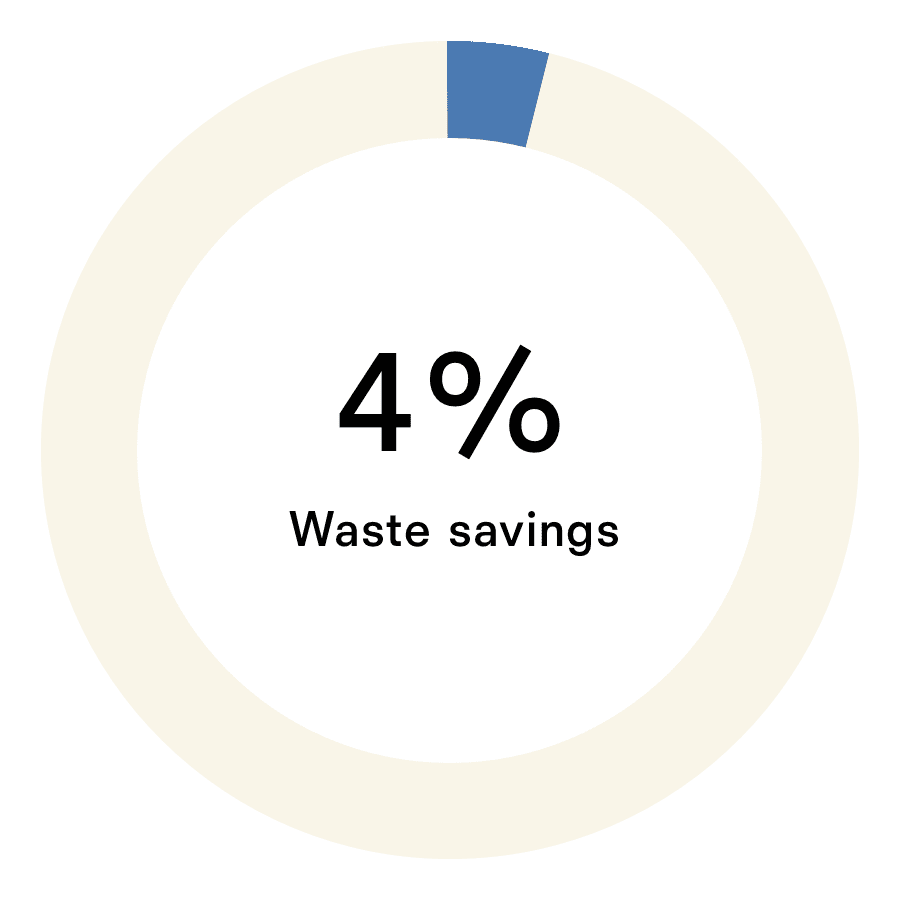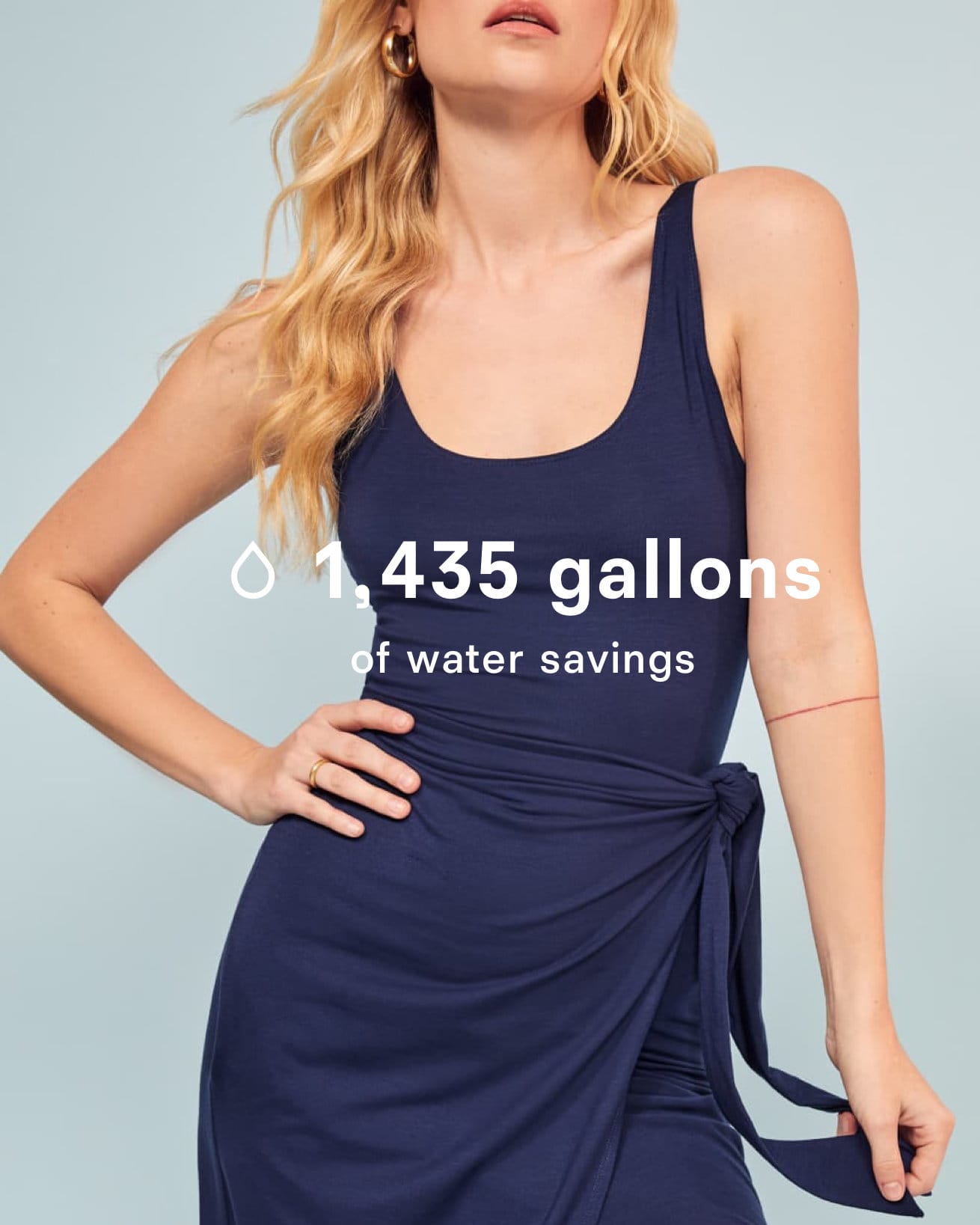RefScale
What is RefScale?
RefScale tracks our environmental footprint by adding up the pounds of carbon dioxide and waste emitted and gallons of water we use to make our stuff.
We calculate how the impact of producing Ref products compares with most clothes bought in the United States.
We share RefScale results for each product we make on our website and publish the totals in our Sustainability Report.
RefScale takes into consideration impacts from most processes in the product’s life cycle. We publish our methodology so you can really dig in and understand what we include in the calculations.
Q3 2021 footprint

Product life cycle
Why is RefScale important?
At Reformation we think about all the costs in creating fashion—not just the price tag.
We share this information on every product page of our website and tell you what impact each garment has on the environment, and how it reduces these impacts compared to most clothes bought in the US. This way we all get to see the total cost of fashion so you can make empowered choices. And we can keep creating better solutions when it comes to making clothes, like how we source.
What impacts do we measure?
CO2
Production emits carbon dioxide and other greenhouse gases, which pollute our atmosphere and contribute to climate change. Cotton, leather, and other raw materials grown in industrial farms create huge energy footprints. Polyester, nylon, and other petroleum-based fabrics emit harmful volatile organic compounds and nitrous oxide - a greenhouse gas almost 300x more potent than CO2.
Production emits carbon dioxide and other greenhouse gases, which pollute our atmosphere and contribute to climate change. Cotton, leather, and other raw materials grown in industrial farms create huge energy footprints. Polyester, nylon, and other petroleum-based fabrics emit harmful volatile organic compounds and nitrous oxide - a greenhouse gas almost 300x more potent than CO2.
Water
Manufacturing textiles is very water intensive. Processes like cultivating crops, extracting and cleaning the fiber, spinning it into yarn and weaving yarn into textiles. Producing one pair of jeans uses over 9,000 gallons of water¹.
Waste
Over 95% of clothing thrown away in the US can be recycled or reused, but sadly more than 85% ends up in landfills²³. On average, 15% of fabric gets wasted on the cutting room floor. That adds up to a lot of perfectly good fabric sent to landfills.
Offsets
It’s not enough just to manufacture sustainably, so we also invest in programs that replace some of the resources we’ve spent, which is where offsets come in. Basically, in exchange for the emissions, water and waste our clothes use we partner with different organizations to help put back some of the resources we used. You can also purchase carbon offsets for your life with climate credits. Our partner, NativeEnergy will direct your purchase to support projects that actively reduce CO2 emissions.





